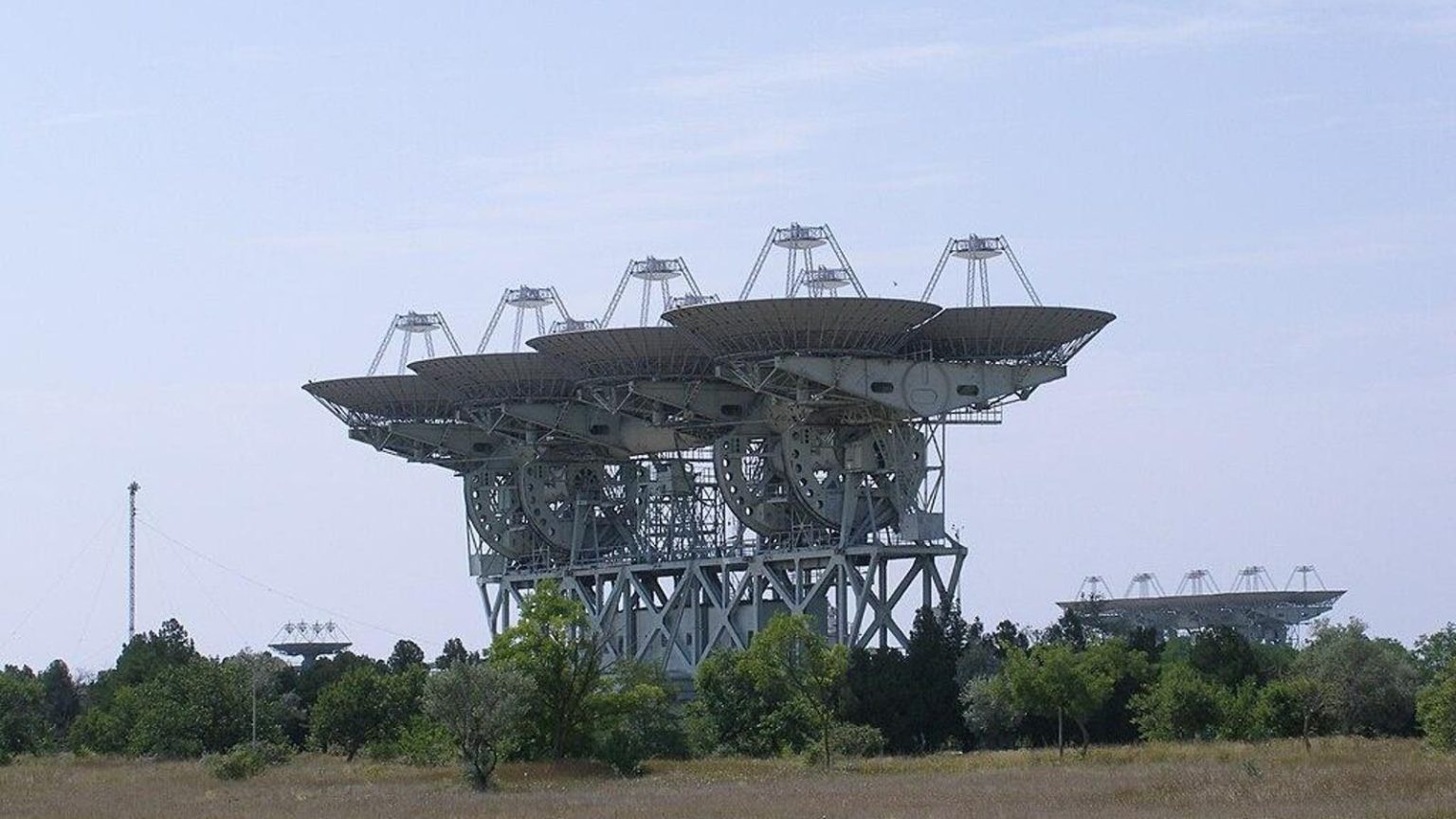With its high mountains, clear weather, minimal radio congestion and southern location, Ukraine’s Crimean Peninsula was ideal for a Soviet space communication system.
Which is why, in 1959, the Soviet space program began building. In Yevpatoria, 100 miles south of the current front line in southern Ukraine, they constructed a massive space radio installation: 10 giant, upward-pointing radio dishes plus their associated power and control facilities.
As part of the sprawling Soviet space communications network, the Yevpatoria site was known as NIP-16. It was designed to communicate with Moon and Mars probes in the 1960s and ’70s but, with many more recent additions to its original .92-gigahertz radio channels, it may also communicate with modern Lotos-S spy satellites and GLONASS navigation satellites. The latter are Russia’s answer to America’s GPS satellites.
That’s why the Russian government took over NIP-16 and its hundreds of skilled personnel when its forces occupied Crimea in 2014. And it’s probably why, at least twice since December, Ukrainian forces have bombarded the priceless space base with missiles.
On Sunday, the Ukrainian army fired at least four American-made Army Tactical Missile System precision rockets at NIP-16. Fires raged at the site through the night, and Planet satellite imagery from Monday seems to depict blast marks on the ground at the sprawling base.
Scientists surely would cringe at any damage to NIP-16 and its suite of hard-to-replace scientific instruments. Thousands of Soviet naval conscripts built the installation at a time when governments were pouring massive resources into space exploration.
But NIP-16 is also a legitimate military target. Its original eight radio transmitters and two radio receivers might be temporarily inoperable, but other transmitters and receivers can send signals to, and receive them from, surveillance, communications and navigation satellites, including the Liana and GLONASS spacecraft.
GLONASS satellites help guide Russia’s most powerful aerial munitions: its KAB glide bombs. As part of the Liana intelligence system, Lotos-S satellites detect electromagnetic emissions from military targets such as vessels at sea—and pinpoint their locations. It’s possible the Liana satellites have been listening for signals from Ukraine’s explosive drone boats, which have been driving the Russian navy from the western Black Sea.
NIP-16 is a tough target. Its radio dishes, generators and control facilities are spread out across two large campuses. The most prominent hardware—the old dishes—are strongly built. According to Russian space historian Anatoly Zak, NIP-16’s builders cobbled the hardware together from old railroad bridges, the hulls of decommissioned submarines and the rotating mechanism from a scrapped battleship.
So it might take many more strikes for Ukraine to inflict serious damage on NIP-16—to say nothing of destroying the base. And to be clear: knocking out NIP-16 wouldn’t eliminate Russia’s ability to communicate with its satellites, but only curtail it. The Russians maintain other space bases, albeit none so close to the front line in Ukraine.
Sources:
1. Kyiv Post: https://www.kyivpost.com/post/34782
2. War Translated: https://x.com/wartranslated/status/1805158869426901260
3. Planet: https://x.com/kromark/status/1805279074140701089
4. Russian Space Web: https://www.russianspaceweb.com/kik_nip16.html
5. Space News: https://spacenews.com/from-the-archives-how-crimeas-annexation-hurt-ukraines-space-program/
6. Sputnik: https://sputnikglobe.com/20170114/russia-liana-satellite-network-details-1049601090.html
Read the full article here





